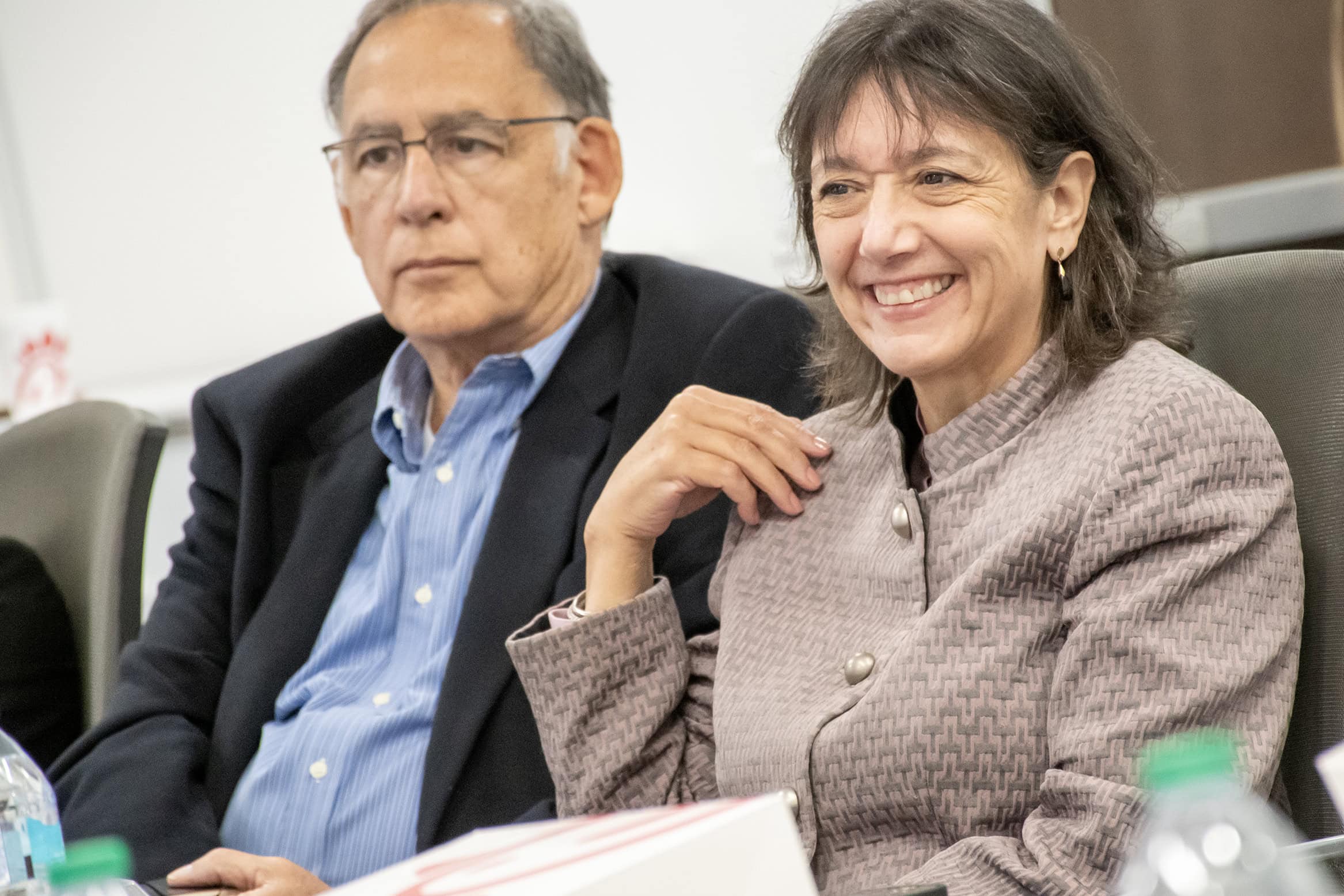NIH Director Visits UAMS Institute for Community Health Innovation
| Monica Bertagnolli, M.D., director of the National Institutes of Health (NIH), joined U.S. Sen. John Boozman and Rep. Steve Womack at the UAMS Institute for Community Health Innovation on Tuesday to hear about the institute’s work with community partners to reduce health disparities and improve health care access among underserved communities in Arkansas.
The meeting was part of a two-day visit by Bertagnolli to tour numerous health-related institutions and organizations throughout the state. Researchers at the Institute for Community Health Innovation in Springdale were joined Tuesday by partners from the Arkansas Coalition of Marshallese (ACOM), Arkansas Department of Health, the Historic St. James Missionary Baptist Church, the Marshallese Educational Initiative, the RMI Consulate of Arkansas’ Office, and the Walmart Healthcare Research Institute to discuss collaborations that led to improved community health outcomes.
“It was really a monumental moment to have Dr. Bertagnolli here in northwest Arkansas,” said Pearl McElfish, Ph.D., MBA, director of the UAMS institute. “NIH funding really funds the next generation of health discoveries. Those funds help us reach rural and underserved communities across the state of Arkansas so we can really look at the best ways to improve health and healthcare access.”
The institute is home to 36 active research studies to address health disparities and advance innovative methods of delivering care. Over the last 10 years, the institute has worked with partners on numerous federally-funded projects, testing mobile and digital health programs to reach mothers in the state’s maternal health deserts, interventions to implement family-based diabetes self-management education among Marshallese populations, standing up a multifaceted, trilingual COVID-19 response for communities across northwest Arkansas, school nutrition research to reduce childhood obesity and more.

Pearl McElfish, director of the UAMS Institute for Community Health Innovation, speaks during a visit by Monica Bertagnolli, M.D., director of the National Institutes of Health.
“We are really driven by the question, ‘What if Arkansas was the healthiest state in the nation?’,” McElfish said. “We believe that all Arkansans really can be healthy, and that is the driver of everything we do.”
Those successes, McElfish said, are the result of meeting people where they are — in their schools, churches, and communities — to learn the best way to implement evidence-based, creative, and innovative health initiatives.
“Brilliance isn’t just found on the two coasts. It’s not just in New York and California. There are brilliant, innovative ideas right here in Arkansas” she said. “The reason Dr. Bertagnolli came to Arkansas was so she could see the wonderful, high-quality research that’s going on in Arkansas, and understand that it’s critical that if we’re going to address health disparities in the United States, that more NIH funding comes to Arkansas and other rural states.”
Bertagnolli praised UAMS and other organizations for their community-based research, adding that she’s looking at how research can help “rebalance the equation” between NIH funding and rural states like Arkansas.
“The people here are truly dedicated toward improving health by being deeply part of the culture, the environment and making things better for all people in Arkansas,” she said.
In addition to its benefits to public health, biomedical research can affect local, state and federal economies, Womack said.
“If you could make some investments in biomedical research, those small contributions to that research have the potential to have trillions of dollars’ worth of impact,” Womack said. “We have to solve some of those long-term, high-cost issues by doing research … that is not only making life-changing, positive impacts on the day-to-day health of everyday Americans, but in so doing are contributing to the financial well-being of the country.
“I think this has been a home run visit for Dr. Bertagnolli, and I think it’s opened her eyes and hopefully the eyes of the National Institutes of Health as to how they can better help us help ourselves,” the congressman added.
To learn more about the UAMS Institute for Community Health Innovation, visit communityhealth.uams.edu.
